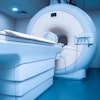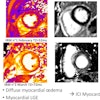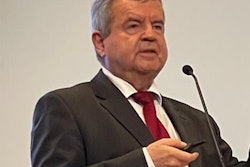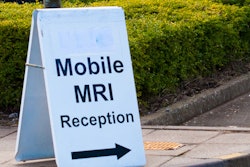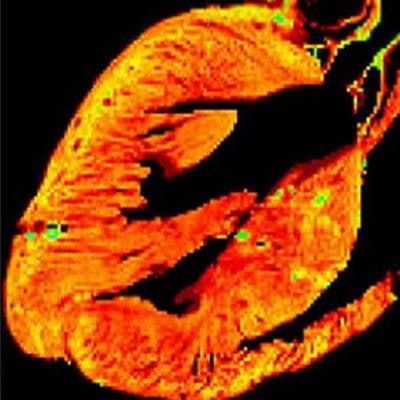
Dr. Rinck's concerns about risks of MRI ("MR safety: Why we may not need a 20T scanner," 21 September 2016) have been at the forefront of concerns among the MRI community for more than 36 years, when the first experiments on genotoxic effects and the courageous animal and eventually human subjects experiments were done on heat energy distribution and induced electric fields, in which the senior experimenters made investigations before patient studies.
Dr. Rinck admits that those of us advocating even higher fields than 7 tesla or the now successfully operating 10.5-tesla whole-body system in Minnesota in the U.S. have always stated exactly what physiological limits must be better understood before proceeding. At last week's meeting of the European Society of MR in Medicine and Biology mentioned by Dr. Rinck, discussion about MRI safety issues certainly was not sequestered in the "back rooms"; in fact, there was a roundtable discussion featuring several experts debating this topic in one of the most prominent plenary forums.
The mistake in his editorial is that he presents to the reader the notion that we are advocating an instrument for clinical studies and that is not the case. The 20-tesla project's principle goal is to answer the scientific question: What are the biochemical correlates of human behavior? This is not a diagnostic goal.
Consider the fact that 1.1% of U.S. adults older than 20 years of age have schizophrenia, and it can be inferred from a multitude of nonimaging studies that the methylation pathways are involved as well as the known involvement of serine and glycine (not detectable unless at 14 tesla or higher for the human brain). We could make a list of compelling reasons for studying the chemistry of the normal and abnormal human brain, not the least of which are the chemistries of violent behavior and the true chemistry of dementia and early predictors of brain pathology from nonconcussive head accelerations.
This focus on utilizing high-field systems to obtain insights into the underpinnings of healthy brain function or disease pathophysiology in groups of patients rather than targeting these systems for clinical application in individual patients is a perspective followed by other high-field initiatives as well, such as the 14-tesla whole-body system planned in Germany.
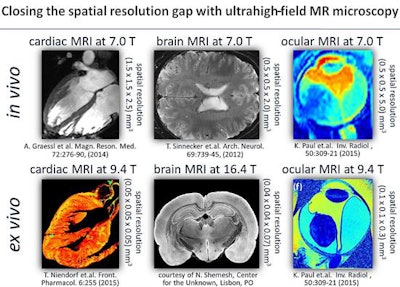 Image courtesy of Dr. Thomas Budinger, PhD; Mark Ladd, PhD; Thoralf Niendorf, PhD; and Dr. Siegfried Trattnig.
Image courtesy of Dr. Thomas Budinger, PhD; Mark Ladd, PhD; Thoralf Niendorf, PhD; and Dr. Siegfried Trattnig.Pushing the magnetic field boundaries of MRI is not a spectator sport but a steam engine for innovation. It is no secret that the low-field followers always beg for more signal, less noise, and faster acquisitions. Yet, the high-field enthusiasts are blessed with the speed gain, sensitivity advantage, and the breadth of MR applications empowered by pushing the magnetic field boundaries, as demonstrated in the figure for in vivo and ex vivo MR microscopy of the heart, brain, and eye.
The community is acutely aware about the opportunities for discovery and puts further weight and resources behind research into the open questions and challenges mentioned in Dr. Rinck's column, including the study of potential physiological effects of ultrahigh and extreme magnetic fields. Of course, this requires rigorous research with the publications being carefully peer reviewed, ideally through an open-access procedure. Notions and columns are not objective metrics: We need data backed up by rigorous measurements or scientific findings based upon careful state-of-the-art numerical simulations and the will to overcome materials and mechanical engineering problems.
Also it should be noted that the International Electrotechnical Commission (IEC) recently harmonized its technical standards and guidelines (Amendment 2 to IEC 60601-2-33 am2 Ed. 3.0, medical electrical equipment, particular requirements for the basic safety and essential performance of magnetic resonance equipment for medical diagnosis). It lifted the first level controlled operating mode limit for the static magnetic field used for human MR from 4 tesla to 8 tesla, taking into account the U.S. Food and Drug Administration, International Commission on Non-Ionizing Radiation Protection, and other peer-reviewed scientific literature.
With almost 40,000 human MR examinations already performed at 7 tesla and no evidence of adverse physiological or health effects reported, there are indeed important clinical applications beyond our initial goals of discovery of human normal and abnormal processes. There has been more than 10 years of experience of MRI at 9.4 tesla in the U.S., including extensive physiological studies with no irreversible effects.
Dr. Thomas Budinger, PhD, is a professor emeritus at the University of California, Berkeley and University of California San Francisco Medical Center in the U.S.
Mark Ladd, PhD, is a professor of medical physics in radiology at the German Cancer Research Center and Heidelberg University in Germany.
Thoralf Niendorf, PhD, is a professor at the Max-Delbrück Center for Molecular Medicine in the Helmholtz Association in Berlin.
Dr. Siegfried Trattnig is a professor at the High Field MR Center at the Medical University of Vienna in Austria.
The comments and observations expressed herein do not necessarily reflect the opinions of AuntMinnieEurope.com, nor should they be construed as an endorsement or admonishment of any particular vendor, analyst, industry consultant, or consulting group.

